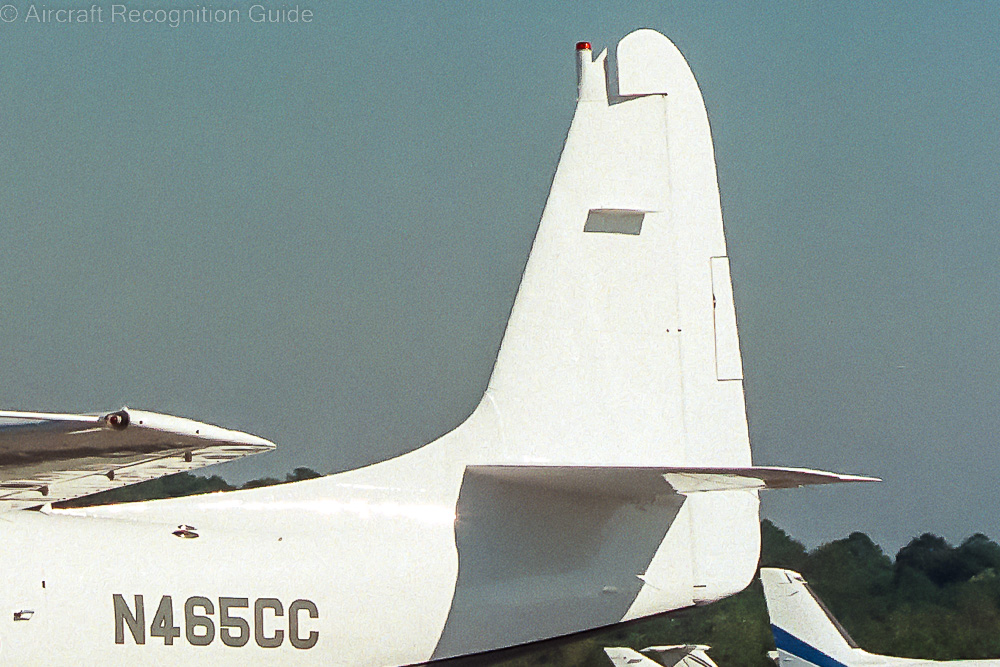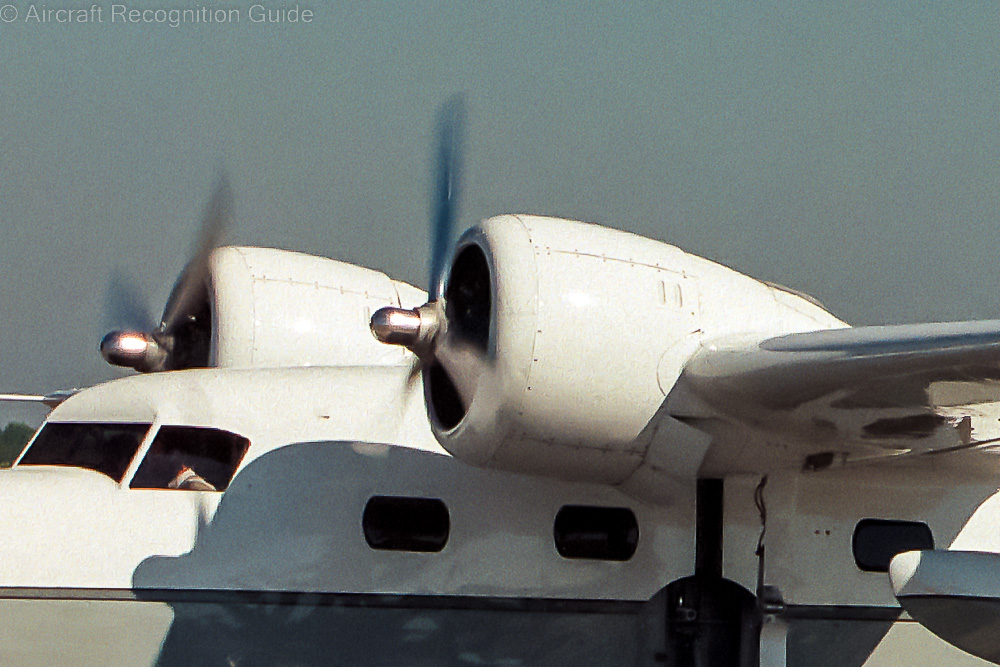
Grumman G.73
As Grumman wanted to expand in the civil market after the second world war, and having experience with the G.21 Goose and G.44 Widgeon, it made a larger twin amphibian aircraft. Model G.73, named Mallard, is a high wing aircraft. Its engines are placed in the wing leading edge. Fixed floats are below the outer wings. The fuselage has a nicely rounded nose with a boat shaped underside and front. Behind the large nose are four flat cockpit windows. The cabin windows are nearly rectangular, but have rounded left and right sides. The single wheel main landing gear is attached to the nacelles via long struts. It retracts in the side of the fuselage. At the back is a tall, rounded vertical stabiliser, that also holds the horizontal stabilisers. The rudder goes down to the tailcone.
Different versions
The different versions of the Grumman G.73 can be identified by the shape of the engine nacelles.
G.73 Mallard
The original version of model G.73 has radial piston engines with three blade propellers. The nacelles are wide at the front, and narrow down twoards the wings.
G.73T Turbo Mallard
Frakes Aviation carried out a turbo conversion of the Mallard. This Turbo Mallard obviously has turboprop engines instead of the radials. This results more slender nacelles which are rounded at the top. The air intakes are below the prop spinner, and the exhausts on both side of the nacelle.
Chalk's International, later renamed PanAm Air Bridge, was a major operator of the Turbo Mallard on routes between southern Florida and the Bahamas. Here one is about the take-off from Miami Sea-Plane Base.
A detail photo of the slender nacelles of the G.73T Turbo Mallard. These are widest around the middle.
Confusion possible with
Grumman Albatross

The Grumman Albatross is clearly family of the Mallard. Apart from being larger it has curved cockpit windows as main difference.
Short Sealand

This amphibian is from the same time frame and of similar size as the Mallard. It has a tail wheel configuration though, a nearly rectangular tail, inline piston engines and larger, rectangular cabin windows being higher than wide.
Canadair CL-215
This firefighting aircraft is bigger than the Mallard and has a much bigger, non-rounded tail. Also, the nacelles are longer and the nose gear has double wheels. Finally, the tail cone only tapers in one direction.
Grumman G.21 Goose

One of the predecessors of the Mallard is the Grumman Goose. This aircraft is smaller with a lower tail and a tail wheel undercarriage.







